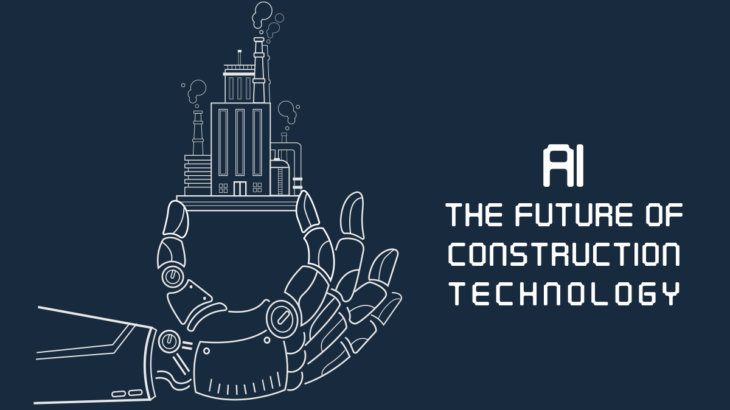It is no secret that Artificial intelligence and other technologies have disrupted the current business scape and changed the way business is conducted. The construction industry is no exception. Use of newer technologies has helped optimise operations including risk management, subcontractor management, schedule management, construction site environment monitoring, and security.
Currently, the construction industry is beset with challenges, the foremost being the lack of skilled workforce. Many countries including UK, Panama, Germany, the USA are unable to fill vacancies in the construction workforce, be it site managers, mechanics to technicians. Other concerns include higher building and assembly costs, schedule overruns and safety issues.
The resolution perhaps lies in the integration of technology at various phases of construction. Adoption of digital technologies can mitigate some of these obstacles and result in savings in time and labour, thereby enhancing productivity and output.
Planning:
AI can be used in the early stage of construction, to survey a proposed construction site and gather enough information to create 3D maps, blueprints and construction plans. Before the development of AI these processes would take weeks, but now it can be done in a day, thus saving both time and money. For example, a Californian firm uses drones with machine learning inputs to create maps of site terrains, and the entire exercise is concluded in just 15 minutes. Another example, Autodesk Revit, a BIM software allows users to design buildings and internal components in 3D and link time or schedule related information to individual components in the 3D model. GenMEP, a generative design add-on to Autodesk Revit focuses on the mechanical, electrical, and plumbing (MEP) design aspects of BIM. It leverages machine learning to automatically design the routing of an electrical system within the building model, while ensuring the entire routes for MEP systems do not clash with the building architecture.
Construction:
AI database systems are now helping engineers understand the integrities and specification of the project. For example, with the help of AI an engineer working on a proposed new bridge would get a better understanding of how the bridge should be constructed. This is based on past projects, as well as verifying pre-existing blueprints for the design and implementation stages of the project. By having this information at hand, engineers can make crucial decisions based on evidence that they may not have had previously at their disposal.
Another example would be that of autonomous machinery which allows the driver to be outside the vehicle while operating at dangerous heights. The vehicle can calculate safest routes using sensors and GPS. Similarly, using drone equipment data can be captured through videos and be used to analyse the site, determine positions of autonomous vehicles and propose how they should be moved. Volvo Construction Equipment’s operator assist tool called the Compact Assist is an intelligent compaction system for soil and asphalt compactors. Smartvid.io, an industrial photo and video management platform, can tag photos and videos of the jobsite automatically by leveraging machine learning, speech and image recognition in order to organize the data and make it easily searchable. Autodesk’s BIM 360 Project IQ, uses connected data and machine learning to predict and prioritise high-risk issues or project subcontractor risk.
Post-construction:
Post-construction AI systems can be used inside the structure, be it for commercial purpose or construction of a private property. An example is the building operations and facilities management apps currently in use; they manage building systems like the HVAC, lighting, temperature and others remotely. They also provide real-time insights through sensors, connected devices and product information like manuals, images of systems inside the building on digital interfaces. Another example, Comfy’, a building automation management application allows users to place centralized requests to change the thermostat settings in a space on-demand, and have preferences automatically applied over time.
In the US alone, billions were invested by companies looking to capitalise on this growing market.
Importance of Aligning AI in Construction Sector
Current applications of AI in construction firms include Building Information Modeling (BIM) tools, project schedule optimizers, image recognition softwares for risk and safety management, and sensor-centric processes and instrumentation to provide real-time solutions for on-site issues. These AI driven mechanisms deliver efficient planning, design, construction and management of buildings.
Additionally, integration of AI will help –
- Decrease wastage of time and effort
Construction practices at present involve considerable amount of miscalculations due to human error and incorrect data. Integration of AI in construction methodologies will significantly reduce errors and enhance timeliness of project completion and delivery. For example, the increasing use of drones at construction sites have helped cut down time to gather survey maps and aerial images. Combining such data sets with AI helps project managers track progress without having to physically be on the project site.
- Predict issues before manifestation
AI in construction will be able to forecast short-term and long-term problems at the worksite through the analysis of video and image data, information from security sensorsand BIM. An example is the BIM tool that provides project managers with a digital repository of comprehensive construction site data. This information can be analyzed by algorithms to detect possible complications.
- Optimize project planning and construction
Artificial Intelligence can help optimize project scheduling and also enhance project planning. For example, certain softwares feature Critical Path Method which is used to schedule, improve and control mega projects in conjunction with multi-objective Genetic Algorithms simultaneously to create project workflows that help coordinate schedules, check project updates, exchange information in real time and other functions.
This is but the tip of the iceberg. With advancements in technology, its applications will also grow manifold.
Presently, construction firms do not possess the personnel, processes and tools to efficiently implement construction strategies spearheaded by AI powered methodologies. While it may look like an expensive proposition, investment in infrastructure, trained workforce and commitment to modernization are the only way forward, with consolidation of AI in engineering and construction business being a near reality rather than a figment of a futurist’s imagination.
